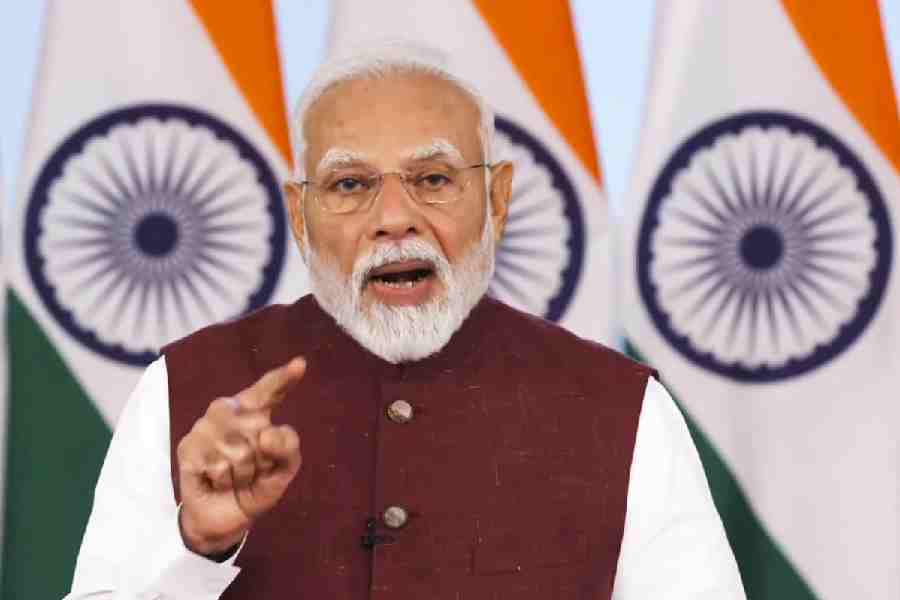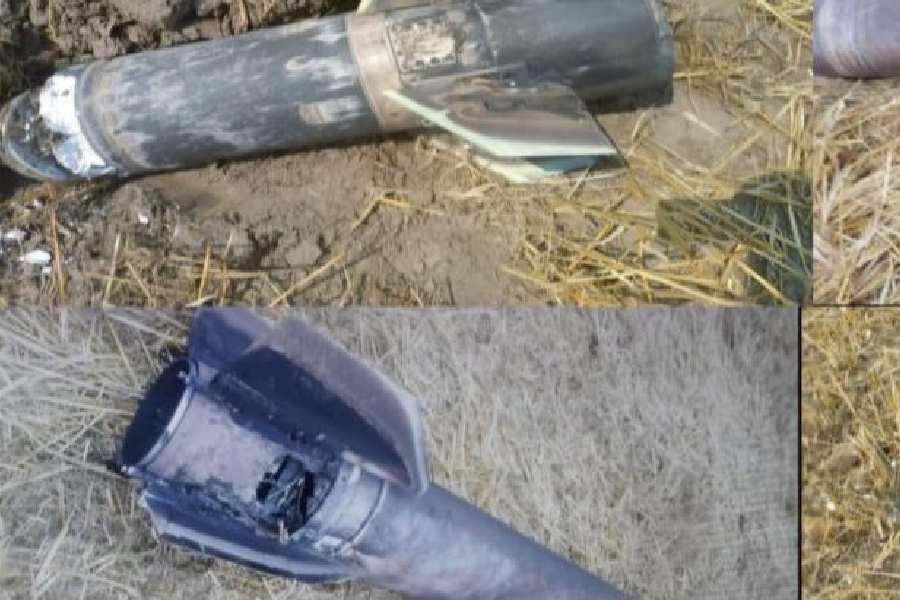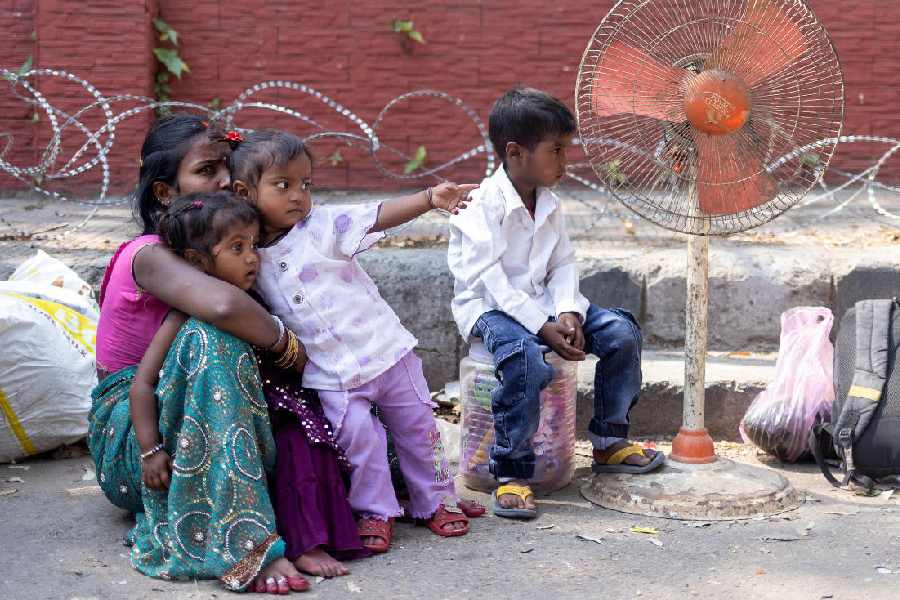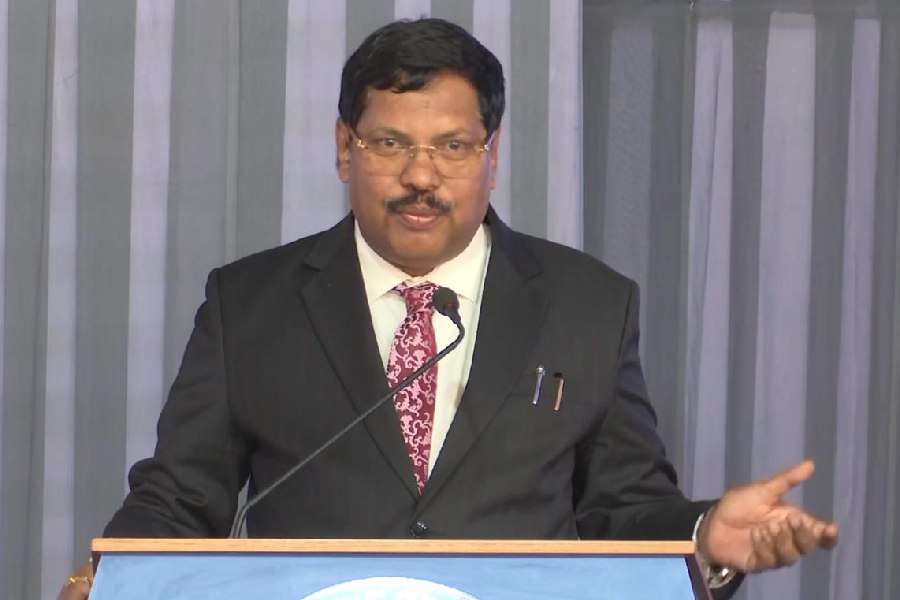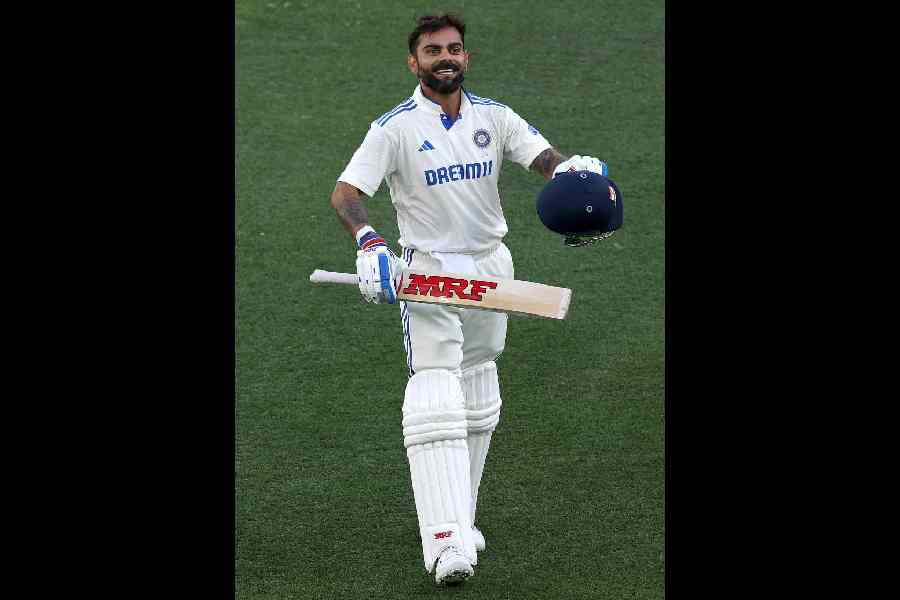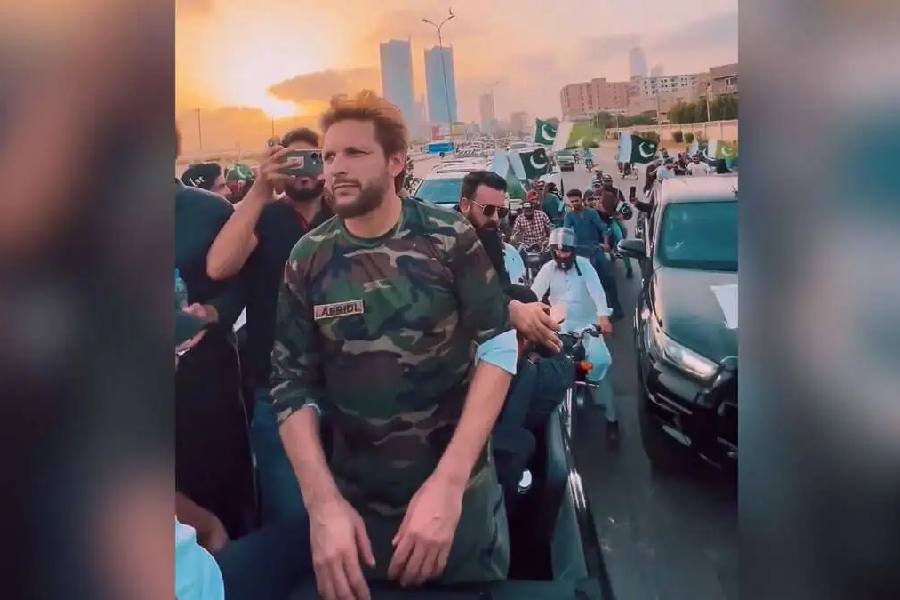 |
| Hand in hand, citizens march in the heart of Calcutta on Friday to protest the wave of attacks on women in Bengal. The banner reads: “Kamduni, Gede, Gaighata… our faces burn in shame”. Girls had been brutalised and murdered in all the three places in quick succession this month. Picture by Sanjoy Chattopadhyaya |
Calcutta, June 21: The “comrades” were unmistakable. The Maoists, if any, not so.
The “comrades” shouted slogans with practised ease and rhyme: “Tai to boli comrade, gore tolo barricade (That’s why I say comrade, let’s set up a barricade).”
Groups that marched in succession, clapping and singing, carried flex banners that seemed to have come out of the same printing press on a conveyer belt.
But there were also many others among the 10,000-plus who had gathered at College Square and marched to Esplanade on a sweltering June afternoon.
They were office-workers, homemakers, teachers, people from villages near Barasat.
“But we are all ‘CPM’ or ‘Maoists’ today,” said a university teacher from a distant campus who was walking with her colleagues.
The rally was as much about violence against women as about the definition of “the other”, from the chief minister’s point of view.
Writer Amit Chaudhuri, who joined a rally for the first time, said he had done so for “freedom of speech”. “One doesn’t want to live in a culture of fear. We want to show the chief minister that we are not afraid,” he said.
Chaudhuri said he hoped Mamata Banerjee would learn from the rally not to accuse or intimidate people just because they hold different views. “I am not a CPM supporter. But is being a CPM supporter illegal?” Chaudhuri asked.
“She took advantage of free speech to come to power. She can’t change the game because she has come to power,” he said.
Anuradha Talwar, who was at the forefront of the Nandigram and Singur agitations till Trinamul took over, was among the marchers. She said that she was protesting against violence against women, but warned against any simplistic blame game. “The violence is increasing,” she said, “but it is important to remember that it has increased not only in the past two years. It is something that started during the Left regime.”
As the rally started from College Square and snaked its way towards the city centre, traffic was disrupted. When the rally reached Esplanade around 5pm, the tail was still near Wellington Square, around a kilometre away.
Officially, police declined to put a number to the faces but in private, officers cited the figure 10,000.
The number was by no means spectacular in the rally capital where mobilisation specialists have proved their mettle in lakhs repeatedly. Perhaps, the less formidable statistic will inconvenience the most those questioning the “spontaneity” of the event.
Film-maker Mrinal Sen, who could not attend because of frailty at 91, said: “The issue isn’t just atrocities against women, there are other reasons too, along with the present government’s numerous verbal abuses and objectionable statements. People have shed their fear and come out on the streets. This protest is completely for the sake of humanity, that’s why so many people have come together and there’s no politics in this.”
“Spontaneity” is hard to pin down. But Jaydeb Hazra’s example should help.
Hazra was sitting in a bus on SN Banerjee Road with his 11-year-old son and 15-year-old daughter on their way back home from school, stuck in a traffic snarl around 4pm when he saw the rally passing by.
He got off the bus with the children and joined the walk.
“I thought it was my duty,” he said. But wasn’t he bothered about the traffic mess? “No,” he said. “I’m the father of a daughter. Who would want his child to grow up in an unsafe city? My daughter also knows about the incident at Kamduni,” Hazra said.
Among the protesters were many others who would on another day cry for a ban on rallies that choke city streets. “I would not ordinarily attend a rally that would disturb traffic flow. But this is different,” said young IT professional Amrita Basu. “It would be nice to have a public space to hold such protests. But since the city doesn’t have such a space, we have no choice. The issue is that important.”
Close to her marched a group that sent up loud cries to punish the killers of Tapasi Malik, who became the face of the Singur agitation by Trinamul. Tapasi’s body was found in a field next to her house in the village and there were complaints of rape. One of the protesters refused to say which organisation she belonged to.
Next to them was a group that sang the Rabindrasangeet “Ebaar tor mora gaange baan eshechhe joi ma bole bhasha tori”, clapping vigorously. (Paraphrased, it means that a time of revival has arrived.)
Also present was Ashis Saha, the brother of the Class VII girl who was killed at Gede in Nadia after an alleged perpetrator promised her the shelter of his umbrella. “I am here because I do not want anyone else to die like my sister,” said Saha, a school student.
The chief minister did not mention the Calcutta march today but referred to the role of civil society in the ouster of the Left. “Some people walked along with our supporters in one or two meetings towards the end…. Orai naki sab korechhen (as if they did everything). I doubt whether they wanted any change at all,” the chief minister told a rally in Burdwan before the Calcutta march began.


